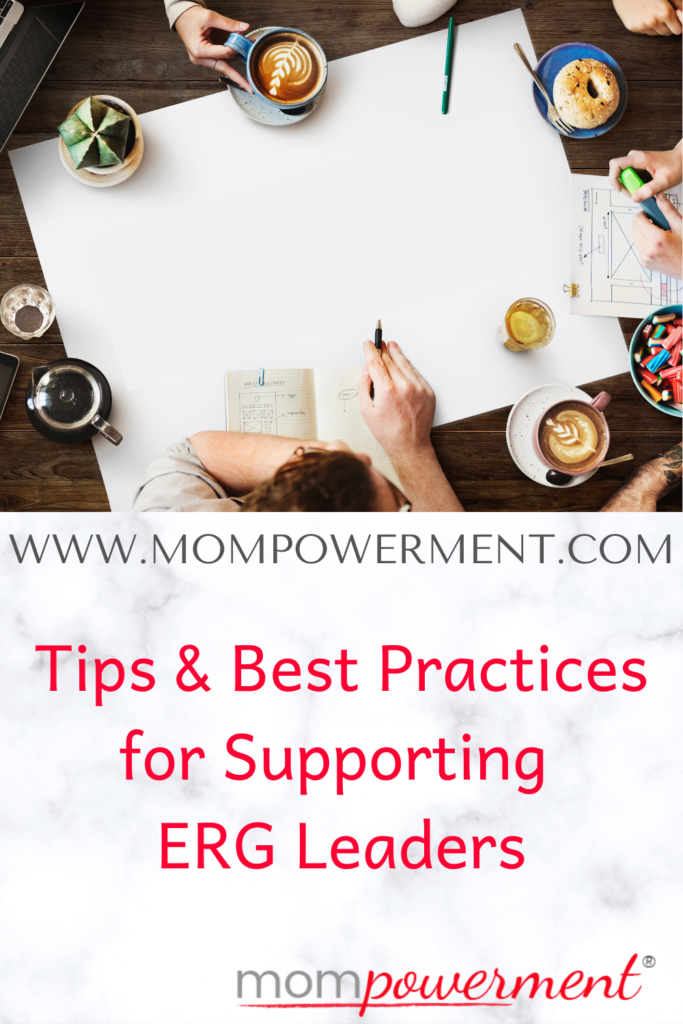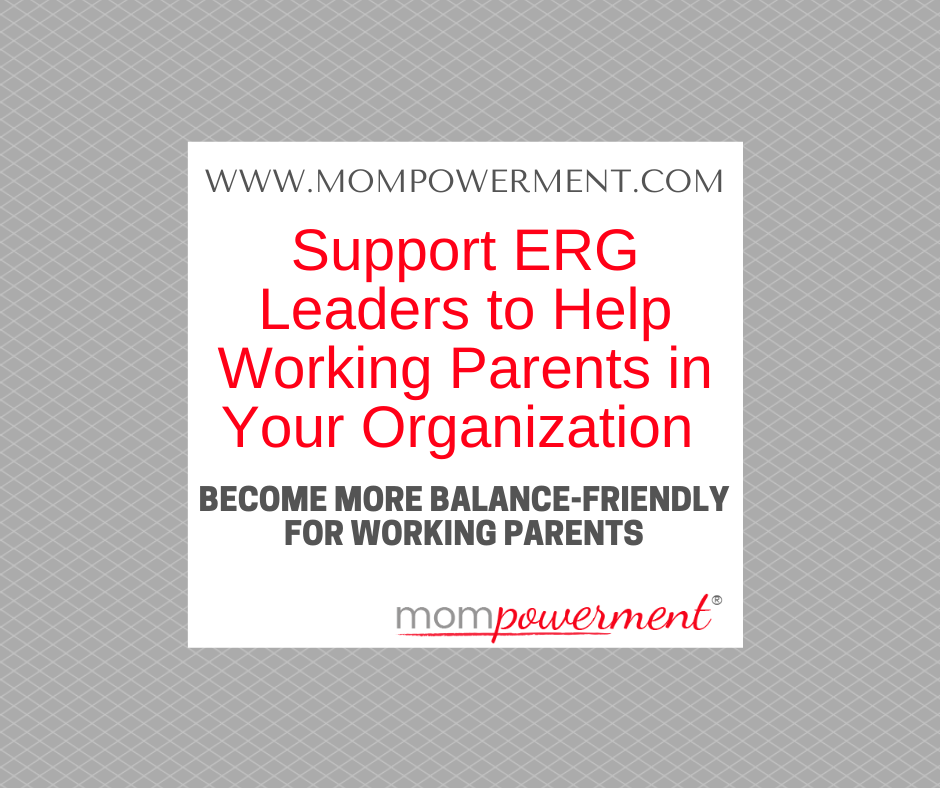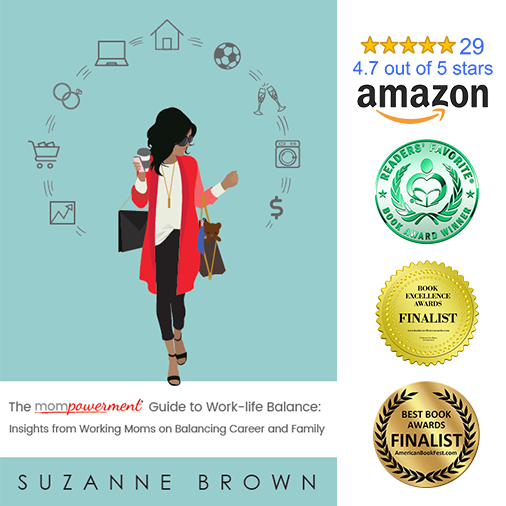
As the final post of the 4-part series for employers on how to better support working moms and dads, let’s talk Employee Resource Groups (ERGs). And, whether you’re creating ERGs for the first time or evolving how you do them, I’ve got tips and best practices for supporting ERG leaders. This is a follow-up to the workplace strategy session I did on LinkedIn.
What is an ERG?
If you’re not familiar with the idea of an ERG, let’s start with what they are. ERGs are internal groups at an employer that allow employees to find colleagues like them at your organization. They are usually led by a person with the characteristics, experiences, or specific goals of the members of the group. These groups ultimately can help similar people experience more of a sense of belonging and camaraderie, supporting employees and helping them to be at their best.
Why do you need ERGs?
As you build a more diverse employee base, ERGs can help. Think of diversity as asking someone to a party and inclusion as actually asking someone to dance. ERGs can help with diversity and inclusion.
Through ERGs, specific groups of employees can build community within your organization, especially those underrepresented. You can strategically provide professional and/or personal support for employees. You’re able to see trends within specific groups of your employee base, which can help you make strategic decisions.
In addition to helping you create a more diverse and innovative culture ERGs help you attract and retain talent. (Yes, that means that these groups can impact the bottom line in a good way!) As an employee, if you are looking at a potential employer and you don’t see anyone who looks like you, you will naturally hesitate to join that organization. If you see others who look like you and realize that they are also supported through something like an ERG, you’re more likely to seriously consider and join the organization. Makes sense, right? The same applies if you’re already in an organization. You’ll likely stick around longer if you feel supported and see others like you there. With that in mind, ERGs can be a strategic part of your diversity & inclusion effort.
As a bonus, ERGs can help natural leaders self-identify. It makes sense that someone who steps into the role of an ERG leader might become a senior leader of your organization down the road. These individuals have stepped up and shown their leadership qualities. They unite employees and make things happen. It makes sense that ERG leadership could be part of the long-term path for developing leaders in your organization.
Let’s shift gears to talk about tips and best practices for supporting ERG leaders so you can be strategic with supporting ERGs and ERG leaders in your organization.
Compensate ERG leaders
You wouldn’t hire someone to lead or promote an existing employee into a leadership role without compensation, would you? So, why would it be any different with an ERG leadership role? While these organizations are often volunteer-run, in an ideal scenario you compensate your ERG leaders.
These leaders are taking time and creating strategic goals. They are building a sense of belonging for colleagues in a way that is likely very different from their day-to-day roles. They are making things happen in your company. Your ERG leaders might be doing the heavy-lifting related to integral initiatives such as diversity and inclusion.
So, yes, it makes sense to pay them a bit extra while they lead this kind of organization. Recognize the effort they’re making on top of the day-to-day things they do as an employee.
Give ERG leaders time to lead
As employees progress through their careers, their roles and responsibilities change. As people move up, things shift away from their plate as they take on my strategic and leadership duties. So, why would it be different if they lead an internal organization?
The second of my ERG tips and best practices is for you to give ERG leaders time to lead. Remove something or some things from their plate so they can strategically lead this internal organization. You want them to carve out time to lead this internal group strategically and intentionally. These are often more senior individuals in an organization, which is what you want. They bring experience, knowledge, and understanding of how the company and/or industry works. So, give them the space and time to thoughtfully lead this internal organization.

Provide ERGs leaders with a budget
The third thing of my tips and best practices for supporting ERG leaders is to give them a budget. ERGs allow you to provide professional and/or personal development. You can build skills within a group or make people feel more supported within your organization. It’s hard to make that all happen without money. With a budget, ERG leaders can bring speakers in or hire experts to do workshops. These speakers (and, yes Mompowerment is a resource that can do workshops within an ERG).
Recognize ERG leaders
The fourth tip is to recognize their ERG leaders. They are bringing people together, supporting your employee attraction and retention efforts, helping develop talent, and maybe even helping you gather data. They can be integral to creating your workplace culture as well.
So the question is: how can you recognize their efforts with their manager, department, or across the company? Yes, they are doing this to support their own interests and colleagues, but they also deserve to be recognized for their efforts. They deserve to be recognized as the leaders that they are. How do you let their manager, department heads, senior leadership, etc. know what efforts they’re making? You highlight their efforts. You let people know what they’re doing either through a spotlight on your intranet. Or you simply let their manager(s) and department head(s) know what they’re doing.
Facilitate access to senior leadership for ERG leaders
In addition to recognizing your ERG leaders, especially to their managers and the company senior leadership team, actually give ERG leaders access to your senior leadership team. This way senior leaders can ask questions and hear trends and insights from specific groups within your employee community directly from the people seeing the trends. Think about these ERGs as strategic leaders in your organization and treat them that way. They would naturally get access to your senior leadership team. Make it a consistent timing (e.g., once a quarter) so those relationships can naturally build over time.
Train your ERG leaders
As you would with any strategic lead, consider giving your ERG leaders additional training. Maybe it’s about hearing new voices who they don’t usually work with and understanding how to bring more of those into the conversation. It could be media training so they’re able to talk to publications about your efforts in areas they now touch (e.g., diversity & inclusion initiatives). Consider training on asking strategic questions, especially as it relates to new initiatives you’re working on (you might want to do this for managers already, so add ERG leaders to that training).
You might have people internally to do this training. Have a communications and/or PR team? Could they do the media training? Have an insights team? They might be able to do the training about bringing new voices to the table to be part of the conversation. As an HR professional, you might have learned new skills to talk to people differently, especially, during the pandemic. How can you share the new things you’ve learned.
And if you don’t have these specializations internally, consider who you usually interact with as a company. For example, could your PR agency help with media training or the strategy team at a marketing agency help with bringing new people into conversations. You get the idea. Tap into resources you’re already using.
Listen to your ERGs
An integral element of ERGs is that these are essentially almost like small communities within your organization. Listen to their feedback, see trends of the different groups, and consider engaging these groups as integral pieces of your new initiatives. Ask ERG leaders what their groups are talking about or how they are reacting to new changes you’re considering. They’re a great spot to take the temperature, especially during the Great Realignment. And they’re a wonderful sounding board for upcoming initiatives, you are able to get feedback from your ERGs in a different way than you might from a manager or department head.
Evolve/Create an ERG for Working Parents
Since I’m talking tips and best practices for supporting ERG leaders, let me give you a bonus tip. This is less about ERG leaders and more about creating resources and tools for working parents through an ERG.
You might already have an ERG for women, where you include content or resources for working moms. I’ve certainly seen that at employers. Really, though, you might want an ERG for working mothers. And, if you’re evolving how you look at working parents (which I hope you are), you might want to support both workings moms and dads instead of simply working moms. If that’s the case, shift to an ERG for working parents, not one only for working moms under women and working dads under men.
This combination of working moms and dads allows the group to facilitate the conversations so that working moms can learn from working dads and vice versa. They can trade tips on all sorts of things, including communication styles between parents or ways they can support each other in their working parent journey. This helps working parents as they parent out loud.
There you have it. You’ve now got 7 new tips and best practices for supporting ERG leaders So, how are you setting up your ERG leaders for success? What areas are you struggling with as you create and/or evolve your ERG strategy?
Remember that Mompowerment can be a resource to help you as you do the strategic planning (e.g., schedule a few consulting hours or day-long session) or as an expert to talk to your employees or specific ERGs about work-life balance. Email me directly with questions or for more information. We can move quickly to help you better support working moms and dads in your organization with practical tips and actional ideas. And don’t forget to download the Mompowerment white paper on how to Become a More Balance-friendly Company for Working Mothers. https://mompowerment.com/become-balance-friendly/



Suzanne, this was a fascinating read! ERGs are helpful in organizations to improve employee satisfaction, creativity, and experience. It gives employees a chance to be heard, respected, and engaged. Employees also have a more profound knowledge of who their clients are. ERGs promote learning and development by providing formal and informal leadership opportunities and increasing visibility for engaged workers.